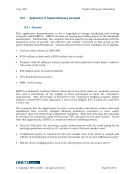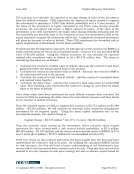June 2007 Capital Adequacy Extension © Copyright 2007, CCRO. All rights reserved. Page 13 of 92 Figure 2.1: Capital Adequacy On the Economic Value end of the balance beam, Economic Capital relates a company’s Risk Capital to its Equity position. On the Financial Liquidity end of the balance beam, Cash Flow at Risk relates a company’s Working Capital to its potential demands for cash. Chapters 3-8 of this paper will focus on the specific determination of Equity, the Risk Capital requirement, and the determination of Liquidity Adequacy however for the moment let’s focus on the balance between Economic Value and Financial Liquidity. While there are thousands of permutations as to why companies go bankrupt, theoretically there are basically two situations when a company can go bankrupt 1) when they can't pay their bills due to insufficient Liquidity (Financial Liquidity) and 2) when Total Liabilities Total Assets wiping out any Equity (Economic Value) in the company. To demonstrate how these two concepts are interrelated, let’s examine two scenarios. Economic Value Economic Value Financial Liquidity Financial Liquidity CAPITAL ADEQUACY CAPITAL ADEQUACY Net Assets Debt Economic Capital Capital Shortfall Cash From Ops Fixed Pay- ments Cash On Hand Credit Lines Risk Aggregation Cash Flow - at - Risk Capital Shortfall 0 0.005 0.01 0.015 0.02 0.025 0.03 $0 $9 $18 $27 $36 $45 $54 $63 $72 $81 $90 $99 $108 $117 $126 $135 0 0.05 0.1 0.15 0.2 0.25 0.3 0 1 2 3 4 5 6 7 8 9 10 11 Loss from Credit Defaults ($MM) Probability -40 -35 -30 -25 -20 -15 -10 -5 0 Internal External Physical Market Risk Assessment Credit Risk Assessment Operative Risk Assessment
Purchased by unknown, nofirst nolast From: CCRO Library (library.ccro.org)




























































































